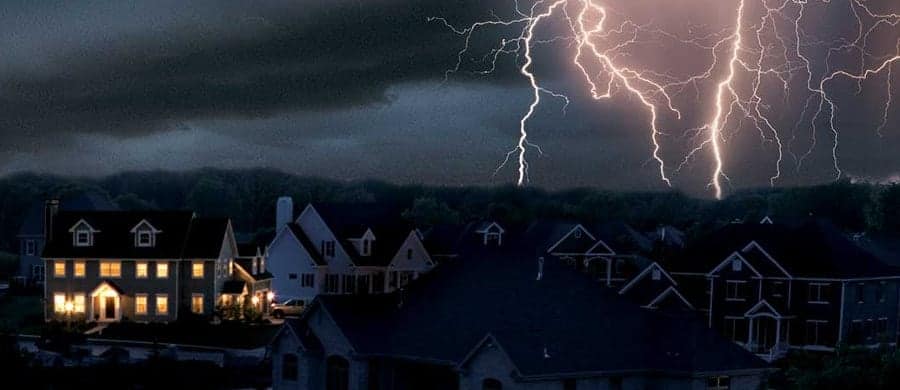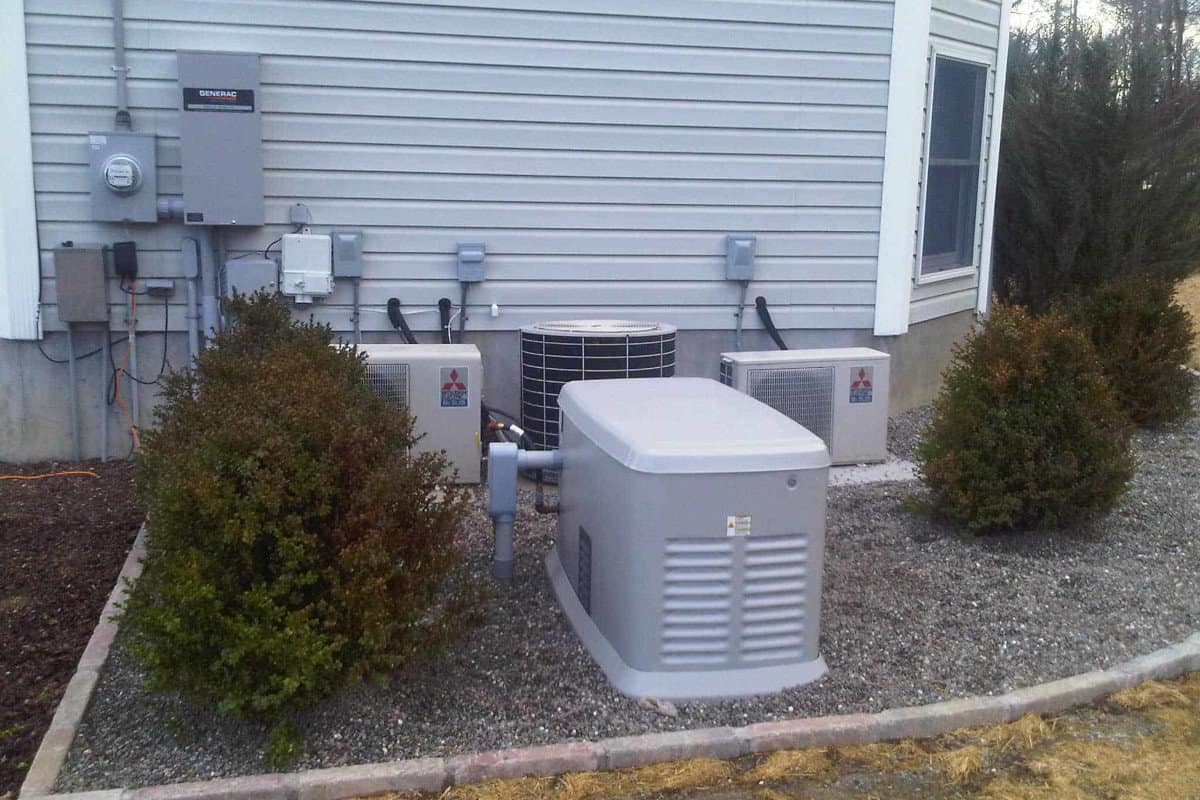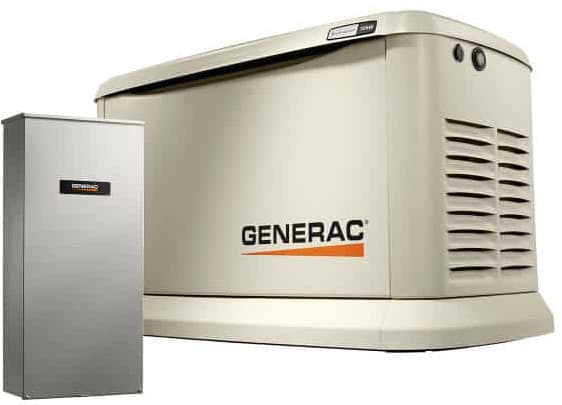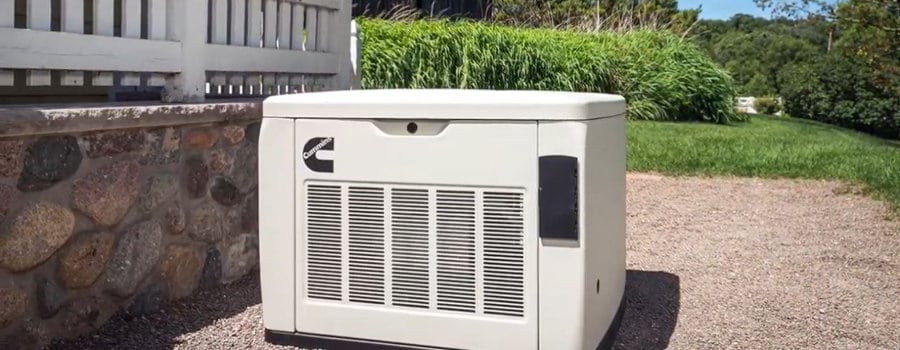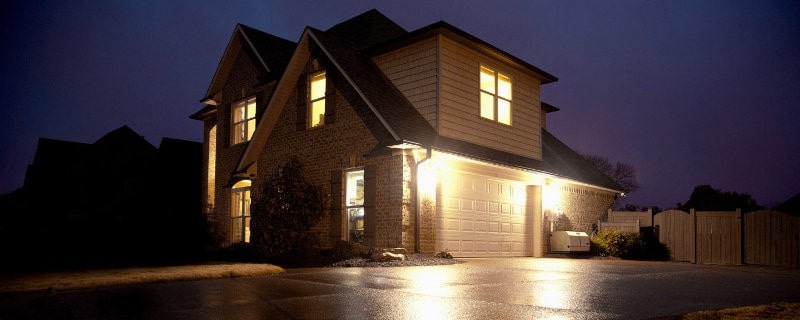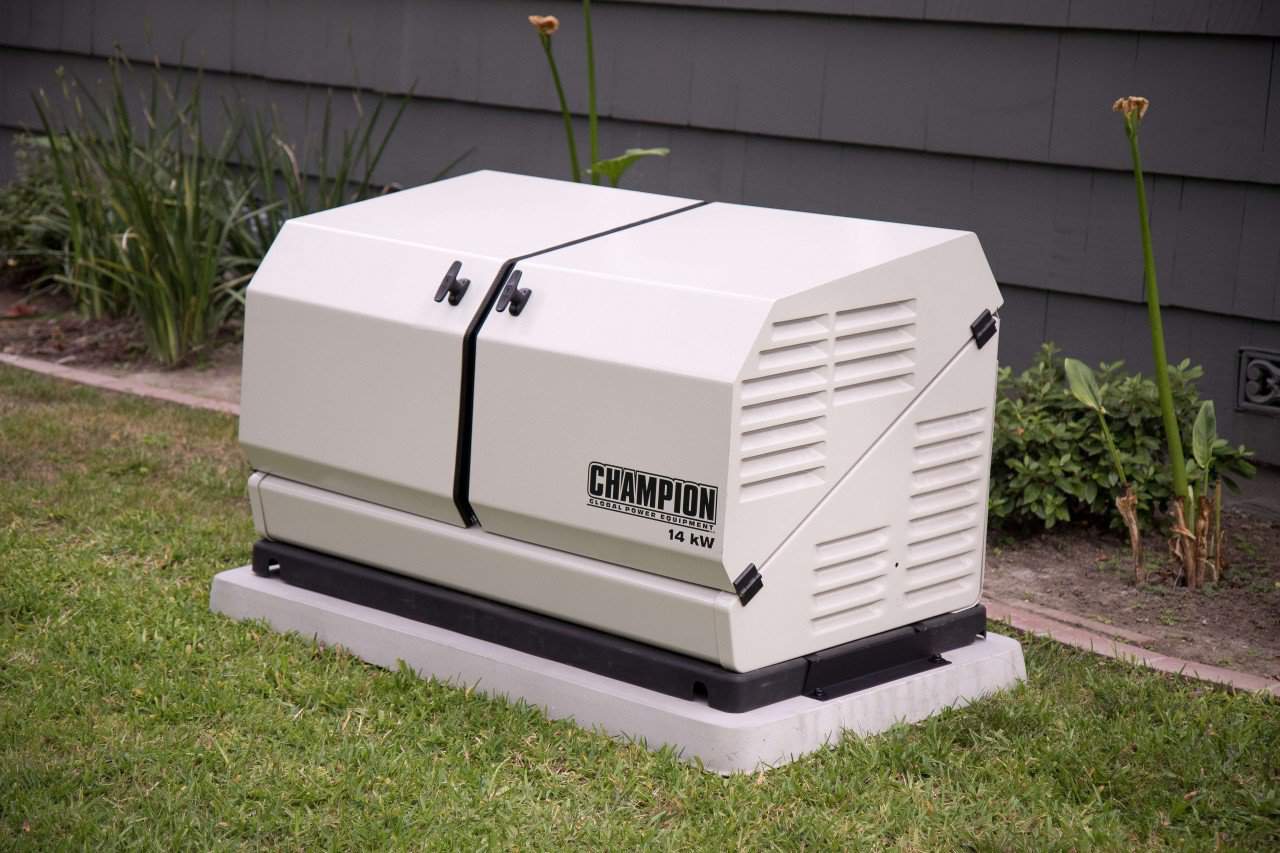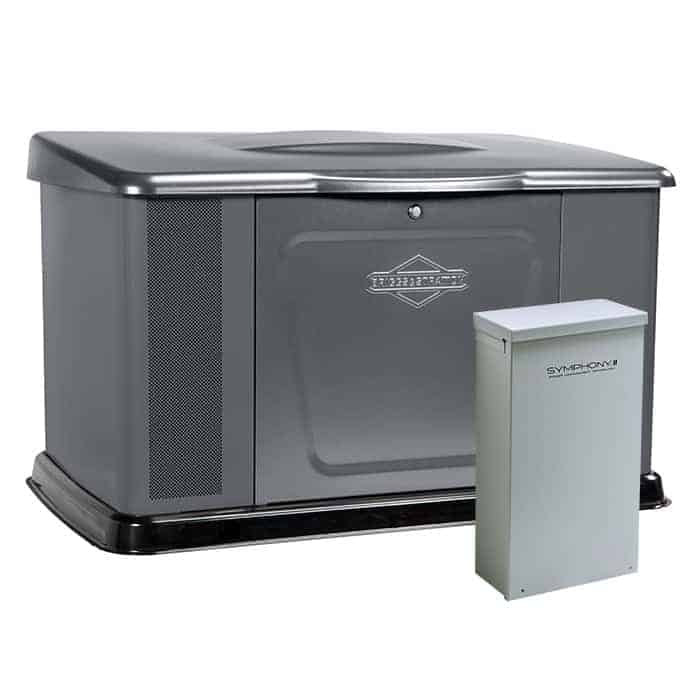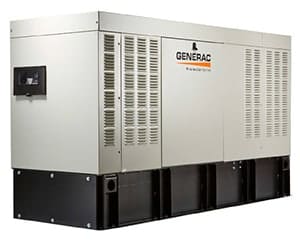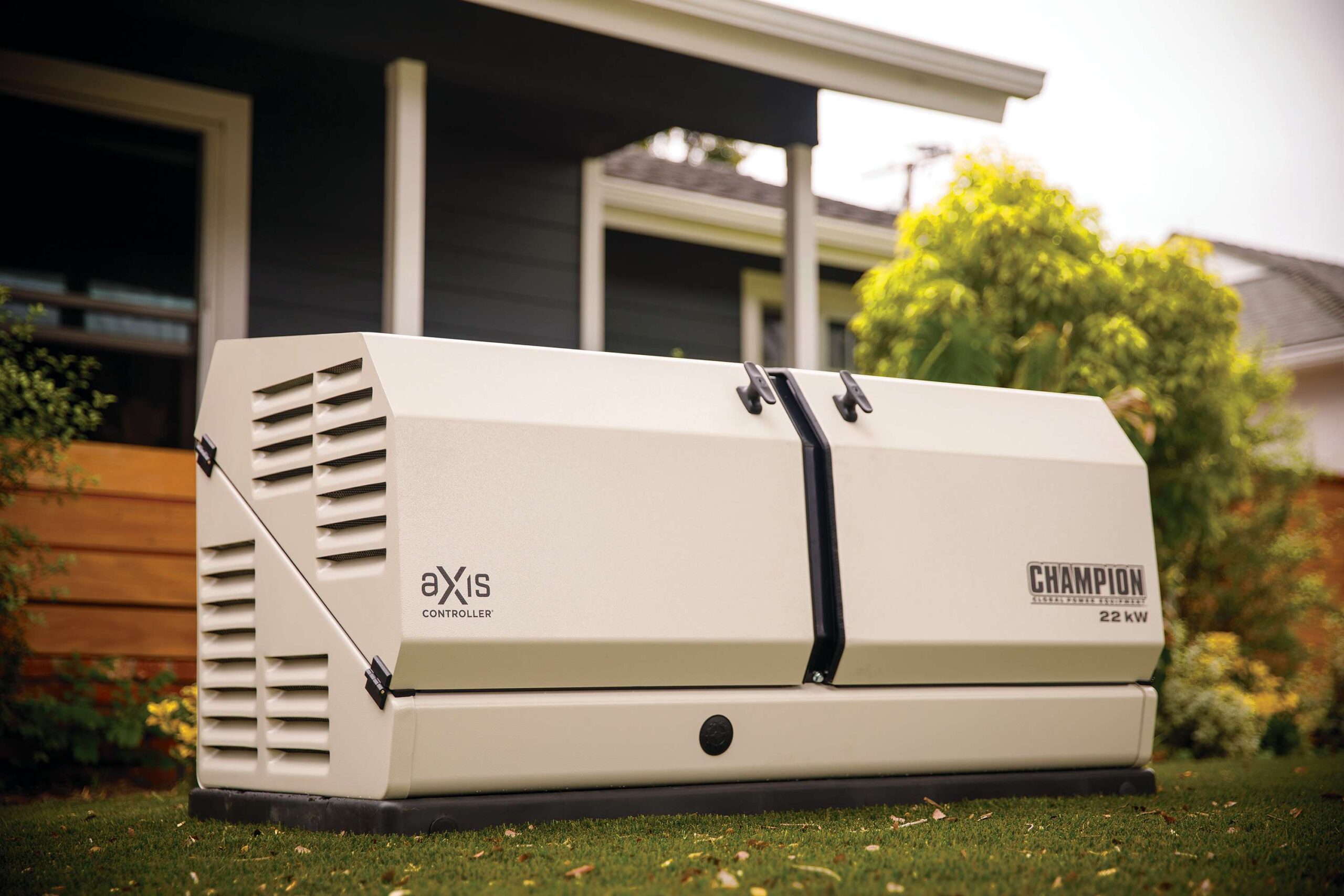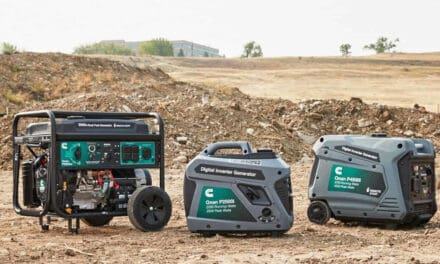Power Outages Caused by Storms and Other Factors Leave Your Home and Family Without Essential Electric Power
How Standby Generators Restore Power Automatically During a Power Outage
The first generators required a team of engineers to keep them working. They kept the steam engines running that provided the mechanical power for the generator and made constant adjustments to regulate the power production. As the technology matured, the need for constant supervision gradually declined until generators could operate on their own. When the cost declined and reliability increased, systems designed to provide backup power found a place in the market.
Called Standby Generators, they always “stand by”, ready to supply power whenever needed, without operator intervention. Modern home standby generators use natural gas or propane for fuel. Where neither fuel is available or accessible, a diesel generator is another alternative.
The Basics
Generac Guardian Whole Home Standby Generator System with Whole House Automatic Transfer Switch
A standby generator system is a permanent installation at a home or business. Residential and commercial systems usually run on natural gas or LP gas. Natural Gas provides a nearly infinite supply of fuel. Large propane tanks last at least a week if sized correctly. An automatic transfer switch connects the generator to the building’s electrical system and automatically selects utility power for normal operation or generator power during an outage.
When the generator detects a power outage, the engine starts automatically and turns a power generating unit called an alternator. The alternator converts the mechanical energy of the internal combustion engine into electrical energy. After a few seconds to stabilize the engine speed and electrical output, the transfer switch isolates the home from the utility grid and supplies power from the generator to the home or business. When the utility restores power, the transfer switch disconnects the generator and connects the utility. The generator runs for a short cool-down cycle and then shuts itself down.
Typically, the generator restores power less than thirty seconds after the outage begins—depending on the genertor model and controller settings.
Automatic Transfer Switch
24kW Generac Generator with 200-Amp Whole House Automatic Transfer Switch
The automatic transfer switch makes the generator a permanent solution to power outages. There are two main types:
- A Whole House Transfer switch controls power to the main circuit breaker panel or a subpanel. On generator power, the entire panel or subpanel receives power. A whole house switch may have built-in power management options.
- Load center transfer switches supply specific circuits with a breaker for each circuit. Normally, the load center receives power from the main panel. During an outage, power comes from the generator.
A transfer switch isolates the standby generator from the utility power lines. When an outage occurs, it automatically disconnects the utility service before connecting the generator. This prevents accidentally backfeeding the power lines and protects the generator from damage when the utility restores power. The transfer to generator power typically takes less than a minute after the power outage occurs and usually within 30 seconds.
Isolation from the utility is important to prevent endangering utility workers or reenergizing downed lines. Power restoration while the generator was connected to the utility would probably result in catastrophic damge to the generator.
When the utility restores power, the transfer switch disconnects the generator and reconnects the utility supply—automatically.
Power Management
Cummins Quiet Connect 20kW Standby Generator with 200-Amp ATS and Power Management.
If high-voltage, high current devices (air conditioners, electric water heaters, electric dryers, etc.) all try to operate at the same time, they may overload the standby generator. A power management option allows high voltage loads to only run when the generator has enough power. This may force one air conditioner to wait while the other runs, and other high-power loads may also have to wait.
Priority based load management allows a smaller, more fuel-efficient, and less costly standby generator to do the job of a larger generator which costs more and uses more fuel.
Homes and businesses often have multiple loads that require management while running on standby power. Power Management Systems usually operate managed loads based on a preset priority. With the right power management option, these loads each get their share of power as necessary to keep the appliances operating during an outage.
In 2022, Consumer Reports rated the Champion 8.5kW and 12.5kW Home Standby with ATS as their first choice “Best Buy” for the fifth consecutive year.
Generator Controller
The controller lies at the heart of the generator. It handles all standby generator functions from start up to shut down and monitors the generator for problems. Some models handle the power outage detection, others rely on the transfer switch to detect an outage. In either case, a short delay of a few seconds ensures the outage is not momentary. The engine starts and stabilizes at full speed after about five seconds. At that same time, the alternator output reaches full voltage and the system is ready to handle the full load electrical load.
After the utility restores power, the controller runs the engine in a cool-down cycle, usually for about a minute, and then shuts the generator down. To keep the standby generator lubricated and ready to run, the controller will also exercise the generator on a set schedule. It starts the unit, lets it run for a short period, then shuts it down again.
Standby Generator System
Champion 14kW Generator with 200 Amp Automatic Transfer Switch
Manufacturers design transfer switches and generator controllers to work together as a unit and provide more features than using separately designed and manufactured switches and generators. This eliminates compatibility issues, simplifies installation, and reduces cost while improving reliability. A standby generator system is often called a ‘Genset’ for generator set. The set includes the generator and the transfer switch, and any optional electrical equipment necessary, such as power management modules.
The modern standby generator system is always ready to supply power during an outage to keep homes safe and businesses operating.
Updated September 1, 2022

